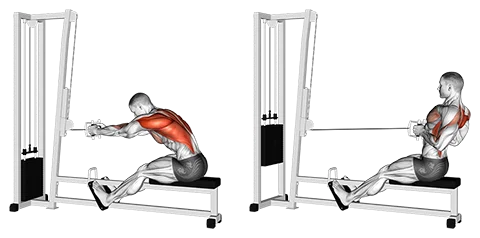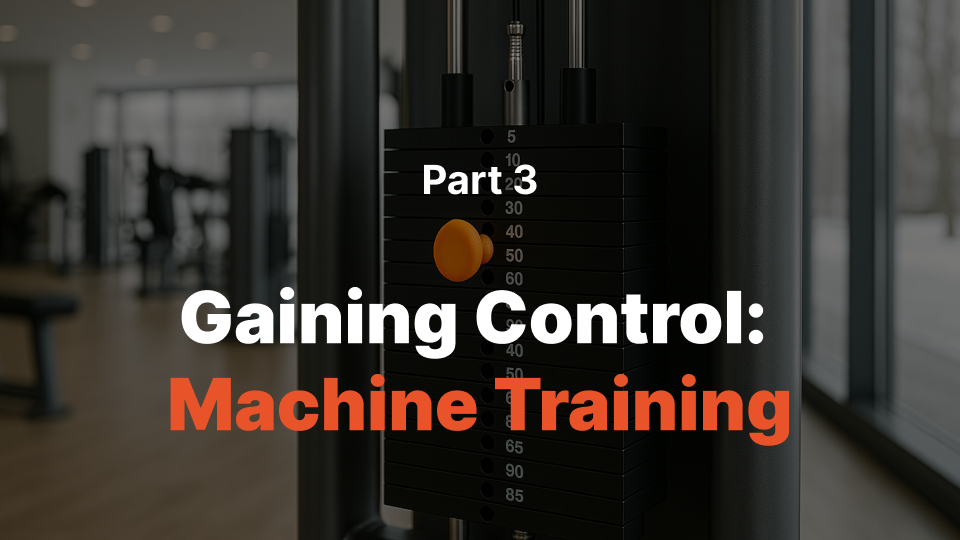Introduction
The "Seated Cable Rows" exercise targets the back muscles (latissimus dorsi), specifically improving their strength and width. It's an effective compound movement that also engages the biceps and rear deltoids. This exercise is beneficial for those aiming to build a strong, well-defined upper body, particularly the back, and improve posture. The use of cables provides constant tension throughout the entire range of motion, ensuring continuous muscle engagement and making it an efficient choice for fitness goals related to back development and posture improvement.
Muscles Worked
- Primary: Latissimus Dorsi, Rhomboids, Erector Spinae
- Secondary: Trapezius, Biceps Brachii, Brachioradialis, Teres Major
How to Do It (Step-by-Step)
- Adjust a cable row machine to a comfortable height, grasp the handle with an overhand grip, and sit on the provided seat, keeping your back straight.
- Pull the handle towards you while keeping your elbows close to your body, contracting your upper back muscles, and extending your shoulders backward.
- Maintain a neutral spine, avoid swinging or using momentum, and slowly return to the starting position, extending your arms fully without locking your elbows.
Tip: Engage your core for stability and focus on squeezing your shoulder blades together at the peak of the movement for better results.
Rep & Rest Guidelines
- Strength: 4–6 reps, 2–3 min rest
- Hypertrophy: 8–12 reps, 60–90 sec rest
- Endurance: 12–20 reps, 30–60 sec rest
Use auto progression to optimize your workout intensity over time with Auto Progression.
Track and manage your rest times effectively with the help of the Rest Timer in Rest Timer.
Form Tips
- Maintain a neutral spine and engage your core muscles to keep your back straight throughout the exercise.
- Pull the handle of the cable machine towards your stomach, focusing on squeezing your shoulder blades together rather than using momentum.
- Keep your elbows close to your body as you pull the handle, ensuring that your upper arms stay relatively stationary during the movement.
When to Use It
- Strengthening and widening the back muscles (latissimus dorsi) for better posture and reducing upper back pain.
- Building mid-back muscles to improve scapular stability and prevent shoulder impingement syndrome in swimming or throwing sports.
- Targeting lower back muscles (erector spinae) to aid in lower back strength, which can help with daily activities like lifting objects or sitting for extended periods.
Workout History allows you to track your progress and improve your workout routines.
Seated cable rows primarily target the back muscles, especially the latissimus dorsi and rhomboids.
A common regimen is 3-4 sets of 8-12 repetitions per set.
Choose a weight that allows you to perform the desired number of reps with good form.
Yes, handles or grips can help maintain proper form and reduce strain on your wrists.
It's generally recommended to allow muscles 48-72 hours of rest between intense workouts.




